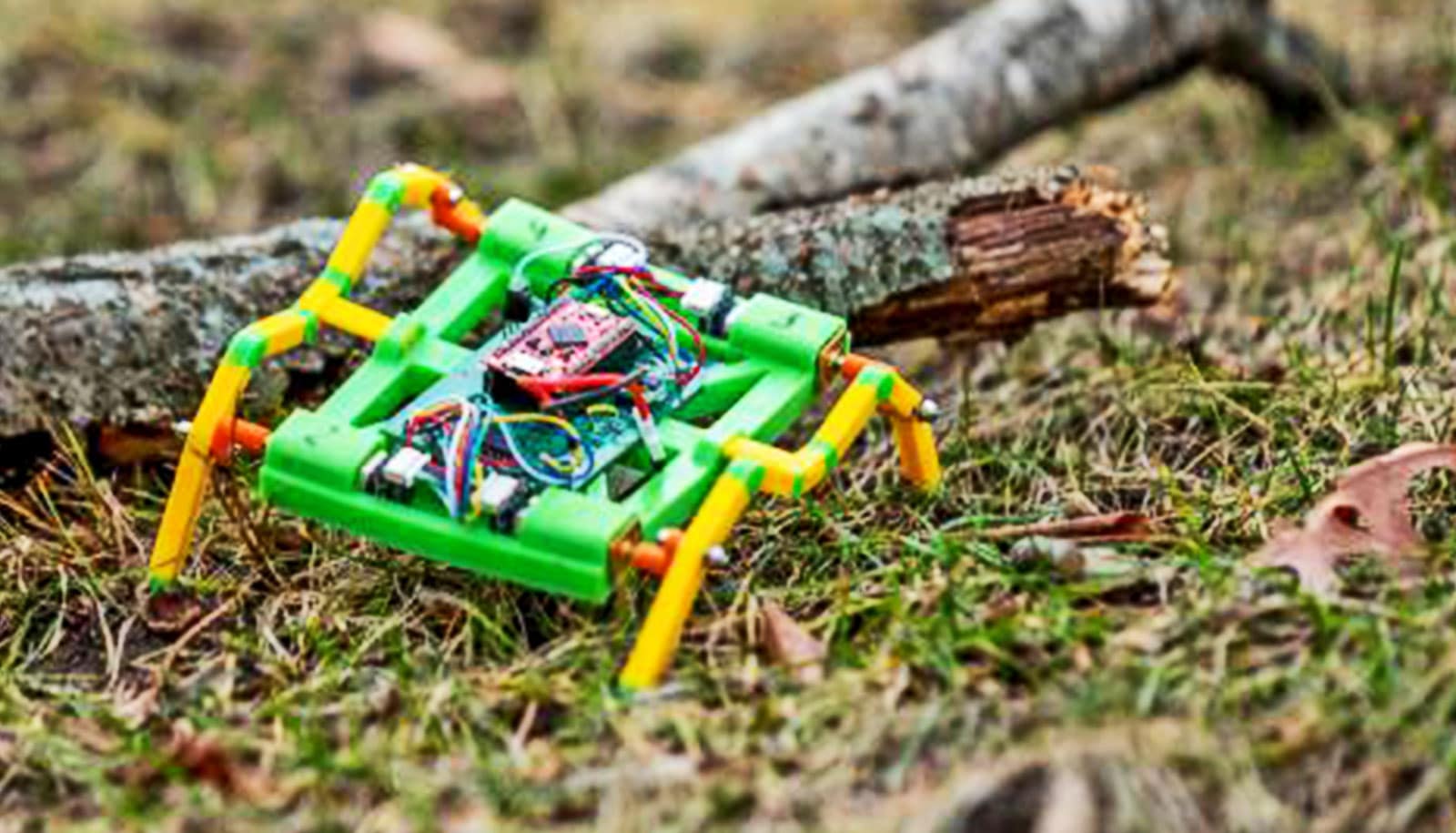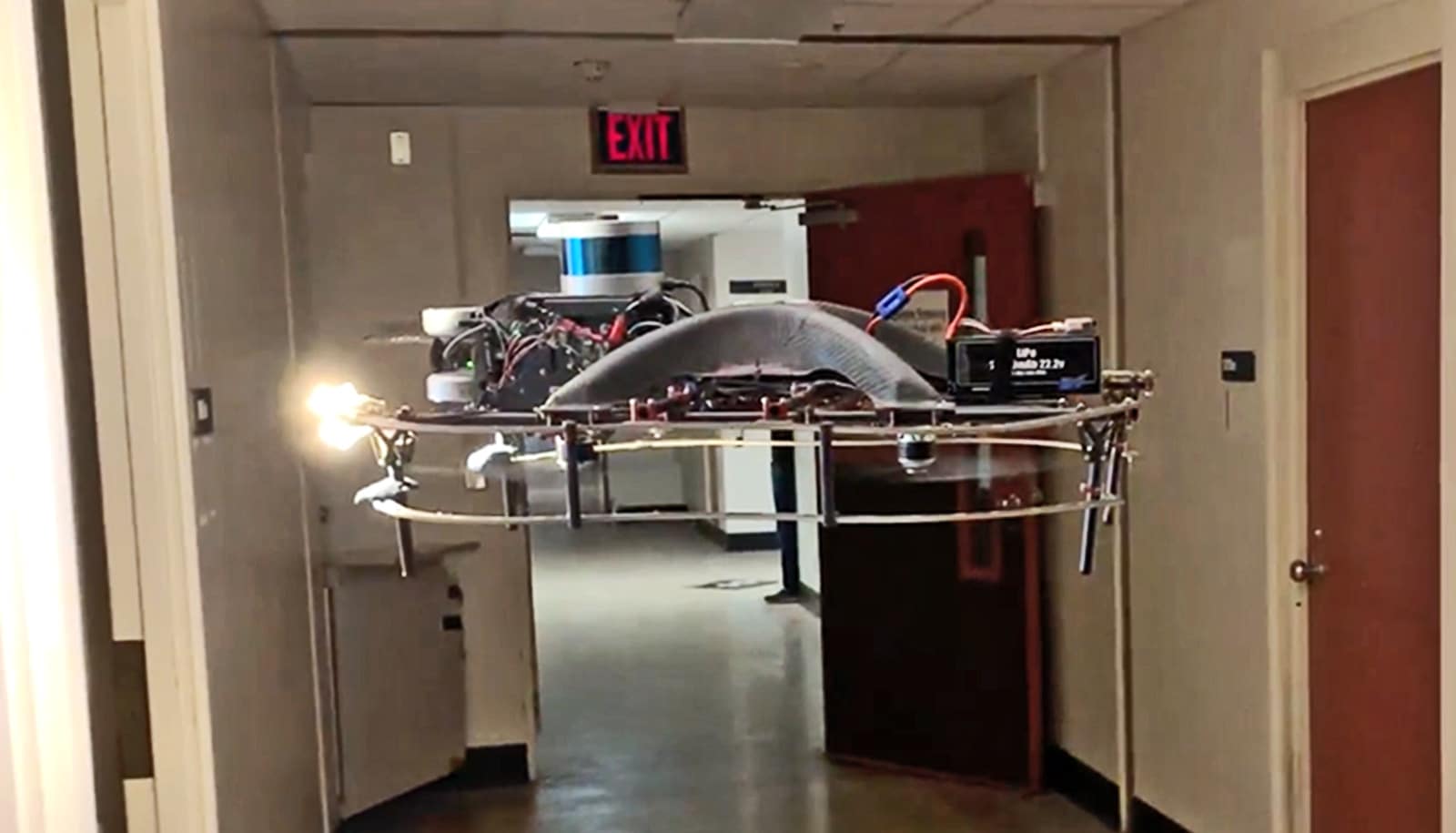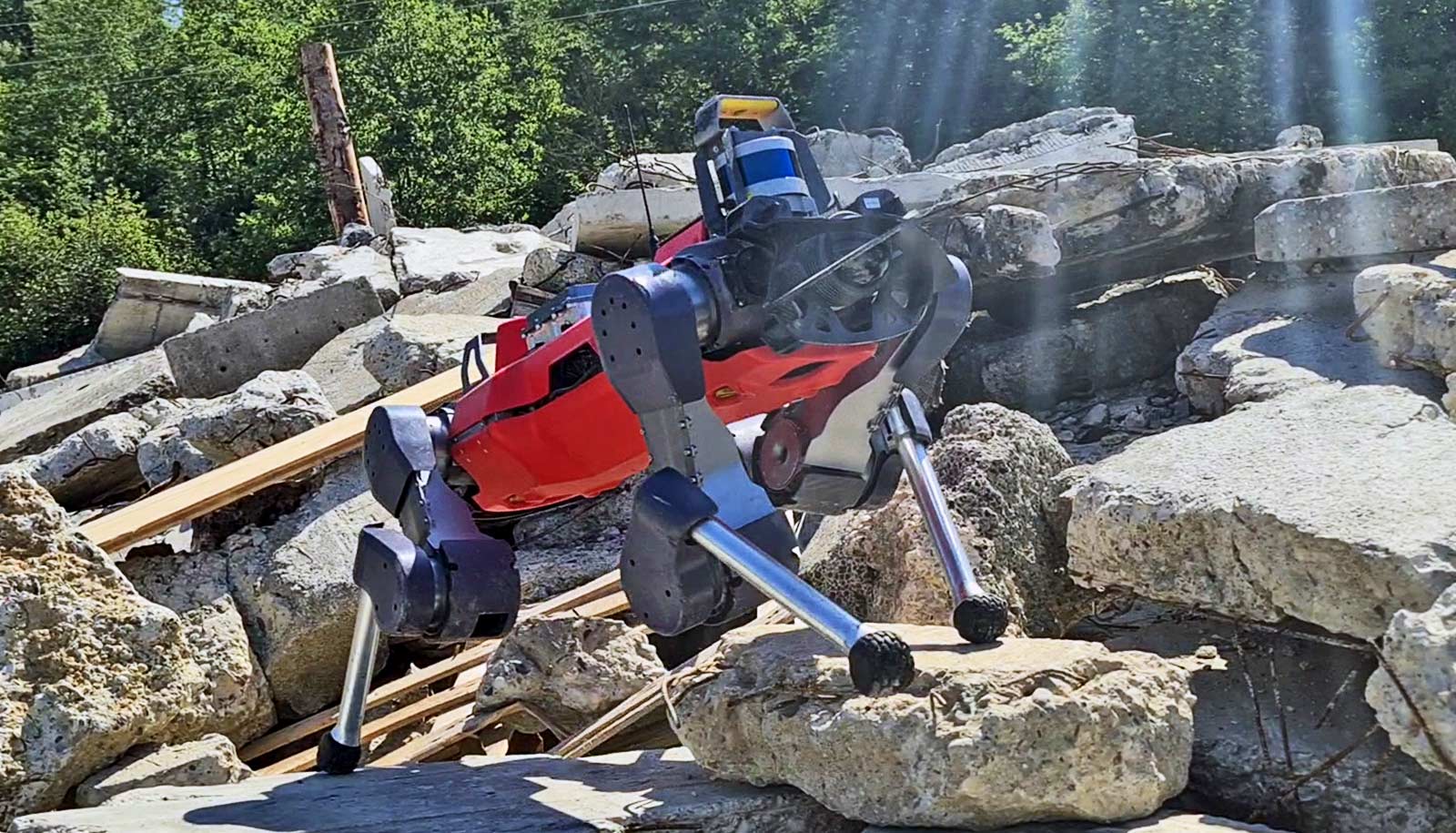Researchers have created small, resilient, soft-jointed robots built with 3D printers.
Imagine a swarm of tiny robots, each about the size of the palm of your hand, spreading out over a wildfire ravaged community, mapping areas contaminated by toxic materials, searching for survivors, identifying areas of rapid wildfire spread.
Or picture the robots being used to clear battlefields of mines, conduct search and rescue missions after earthquakes, or deployed on farms to fend against pests and track soil conditions.
That’s a vision Markus Nemitz, assistant professor of mechanical engineering at Tufts University, has been working on for many years.
“My PhD research was in swarm robotics,” says Nemitz. “I would develop algorithms that control large assemblies of robots, allowing them to share information and modify behavior based on evolving conditions and the need for collective effort.
“But I realized that while I and others were creating these algorithms for simulations, there were no actual robot systems to demonstrate them. I thought, maybe I should fix that problem.”
Creating actual swarms of hundreds or thousands of robots is generally considered to be too expensive to put into practice. Nemitz, along with graduate student Cem Aygül, designed a robust robot that can be almost entirely fabricated on a 3D printer within just a few hours, overcoming not only the cost barrier, but also shrinking the manufacturing timeline so that theoretically one could print hundreds of the robots with a bank of printers in a day.
The applications for robot swarms are expected to take place in difficult and unpredictable environments, and some robots could be lost or sacrificed carrying out their collective task.
“We designed our robots with soft and rigid components, instead of mostly rigid components like you might see on the Boston Dynamics robot dog ‘Spot,'” says Nemitz.
“You could drop our robots from a helicopter or flatten them under a wheel, and they will still pick up and walk away. They walk over rocks. They walk over sand. They can crawl up steep inclines. They can handle many different environments, so now we can develop swarm capability that actually leaves the lab and has a high survivability rate.”
The limbs of the robot are made of semi-soft links and soft joints, akin to mammal or reptilian limbs that have bone structures connected by softer cartilage-lined joints, allowing some play in the motion beyond a single plane of rotation. By assigning multiple materials with varying softness to linkages, the robot becomes more resilient to physical impact.
Fully rigid robots, some of which are quite agile, nevertheless have to make sudden multiple rapid corrections in more than one limb to stay upright when landing on uneven and unpredictable terrain. The robots incorporating soft joints have a more fluid pattern of motion when walking over terrain, easily adapting to surface irregularities.
The printer is capable of dispensing multiple materials, so both semi-soft and soft components are built simultaneously. Electronics are added manually mid-print, but that step can also be automated.
“Once we have these robots, we can also customize them, since each operation can have novel conditions,” says Nemitz.
“You may recall that in 2018 there was a soccer team trapped in the Tham Luang Nang Non cave system in Thailand. There was no robotic system that could access them because of the combination of narrow channels, rocky surfaces, and underwater environments. Theoretically, one could rapidly print robots with novel combined features to navigate these complex environments to deliver messages and supplies.
Nemitz and his lab have been working in parallel on specific applications for landmine clearing and environmental monitoring, including tracking the changing conditions and position of glaciers.
The researchers describe the research in a new paper in Nature Communications.
Source: Tufts



